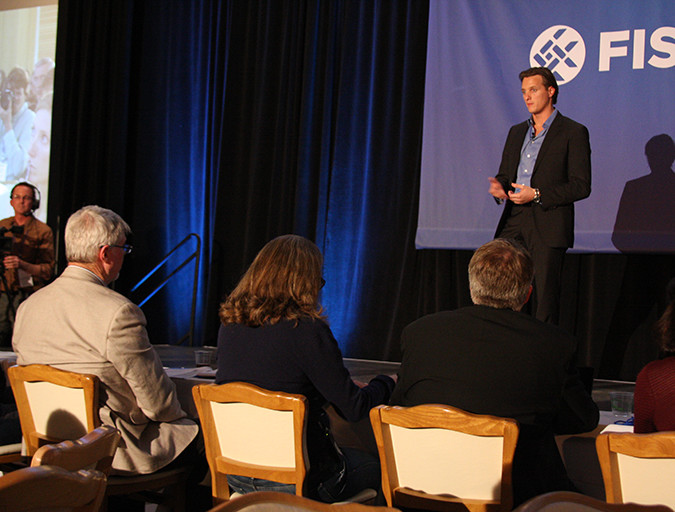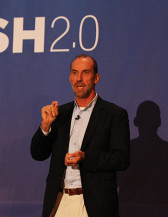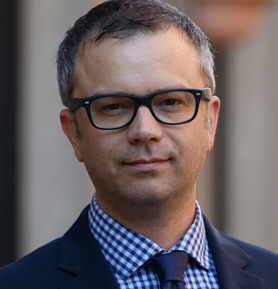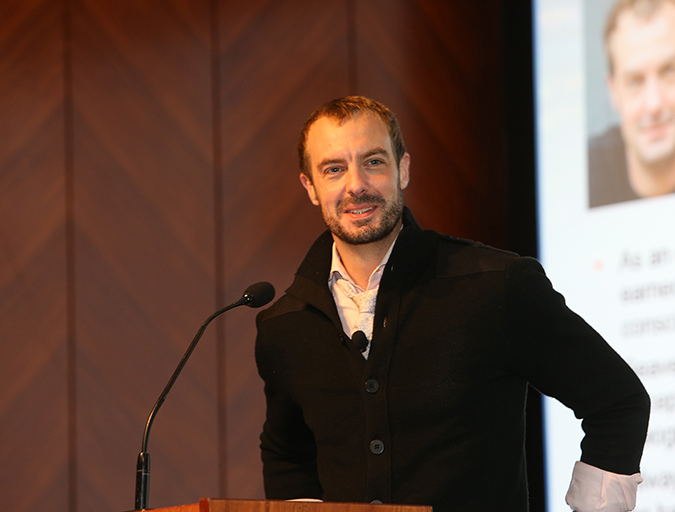Aquaculture companies perfect their pitches at second Fish 2.0 competition

The fisheries and aquaculture industries have more in common than the production of seafood. They each need innovation, emerging leadership and investor interest to advance the sustainability of their wide-ranging operations. All were on display at Fish 2.0, an industry-investor competition (and quasi-matchmaking event) held at Stanford University earlier this month.
Monica Jain, Fish 2.0 founder and executive director, said the 2015 iteration was much bigger than the inaugural event, held at the Palo Alto, Calif., school in the fall of 2013 (it will be held every two years). “Almost everything was doubled,” she said. “Twice the number of applicants (170), investors (250), experts and sponsors.”
Inquiring minds came from overseas to see the unique format and scout out potential partnerships. Mike Velings, CEO and co-founder of Aqua-Spark in the Netherlands, said this year’s event was exciting. “More entries, high quality, more diverse and from different geographies,” he said. “There were a lot of aquaculture entries. There were more investors. It’s pretty unique and it’s only the second time it’s organized.”
Jain, who is also executive director of Manta Consulting in Carmel, Calif., identified a need to “build a space” for impact investors like Velings – those looking for social as well as financial returns – to see potential deals and for sustainable seafood businesses to get some financial bites on the line. “We needed to close the gap,” she said.
One of the investors who served as a judge for a portion of the competition said Fish 2.0 brings a “great crowd and interesting companies” together. “It shows there’s a real level of interest in the technology of seafood catching, production, processing and – what was interesting to me – how we deliver to the consumer,” said Mitch Presser, partner at Freshfields Bruckhaus Deringer in New York.
Fish 2.0 also aligns with the missions of key foundations active in the seafood space, all of which are sponsors: The Gordon and Betty Moore Foundation, The Walton Family Foundation and The David and Lucille Packard Foundation. “The foundations are supportive. Our underlying objective is to grow the field and the number of interested investors,” said Jain.
The industry is growing and it can be very capital intensive. If we can improve returns by improving efficiency, it will help a lot. Investors agree that there’s a lot of challenges with aquaculture, but it’s inevitable because we have to have it.
The competition goes something like this: Entrepreneurs with freshly polished business plans and rehearsed talking points get a five minutes on stage to pitch their pre-screened investment opportunity to a panel of expert judges who choose two winners each from three categories (pre-revenue startup, post revenue early stage and growth stage). Each of the 37 finalists presenting also faced an eight-minute question-and-answer session with the judges. Winners took home a $5,000 cash prize, which is a departure from the first competition, when just one grand prize winner collected $40,000.
“Whether it’s $40,000 or $100,000, it’s not enough for most [finalists],” said Jain. “They need much more than that. The real value is the respect they have, the press they get and the recognition, rather than the cash. They can leverage that for better relationships with investors.”
Two aquaculture companies were among the winners this year: Kampachi Farms Mexico, an offshore aquaculture business producing sashimi-grade yellowtail; and SabrTech, a Nova Scotia-based company that produces algae-based aquafeeds from waste streams from fish farms. Both were entries in the pre-revenue startup category, with Kampachi Farms showing “strongest market potential” and SabrTech demonstrating the “greatest potential for social and environmental impact.”
Neil Sims, founder and CEO of Kampachi Farms LLC, the research arm based in Hawaii, appreciated the recognition for his company and the direction it’s taking, but more so for the recognition of open-ocean aquaculture as a means to increase global seafood supplies sustainably.

“Give credit where it’s due,” Sims said. “The foundations supporting Fish 2.0 recognize we need to open this up. It’s a compelling business opportunity. They recognize the science is very compelling: You can do net-pen aquaculture in an environmentally responsible manner.”
SabrTech pitched its RiverBox, a “modular, scalable and rapidly deployable biofilm platform for the production of algal biomass for aquaculture,” as well as the fuel, nutraceutical, chemical and personal care industries. Company President and CEO Mather Carscallen presented at Fish 2.0 and referred to aquaculture as “one of the most up-and-coming industries around the globe.”
Aquaculture’s growth is remarkable, as it now represents nearly half of all the edible seafood products produced globally. But while some operations like salmon farming are quite advanced after decades of development, others could benefit from an infusion of cash.
“I was the guy who stood up and said, ‘You’re all making a bit of a mistake here. You’re calling it a capital gap, or a funding gap. This is really a return gap,’” Presser said in a phone interview. “There are interesting places to invest in seafood, both in wild-catch and in aquaculture. Quotas are valuable. And there’s value on the aquaculture front, with feeds and genetics. I think what we haven’t seen yet is the level of technology rising to deliver greater certainty in aquaculture.”
Lacking that certainty, investors have historically approached both fisheries and aquaculture with caution. Jain said the tides are indeed turning.
“The returns are there. If you’re talking production, maybe” returns on investments are slow, admitted Jain. But she said technology that controls disease or enhances storage and traceability has significant upside potential.
“You just need the right capital for the right deal,” she said. But what does she think are the best bets in today’s rapidly evolving industry and financial climate? “Everything that improves efficiency: feed, hatcheries, energy. All of those things are catching investors’ eyes. The industry is growing and it can be very capital intensive. If we can improve returns by improving efficiency, it will help a lot. Investors agree that there’s a lot of challenges with aquaculture, but it’s inevitable because we have to have it.”
Author
-

James Wright
Editorial Manager
Global Aquaculture Alliance
Portsmouth, NH, USA
[103,114,111,46,101,99,110,97,105,108,108,97,97,103,64,116,104,103,105,114,119,46,115,101,109,97,106]
Tagged With
Related Posts

Innovation & Investment
GOAL 2015 Day 2: The story we choose to tell
If Day 1 of GOAL 2015 was all about defense, the following day of the aquaculture industry’s leading global conference was about offense — exuding confidence that farming fish is the way to feed future generations, and determining how to tell the world its story.

